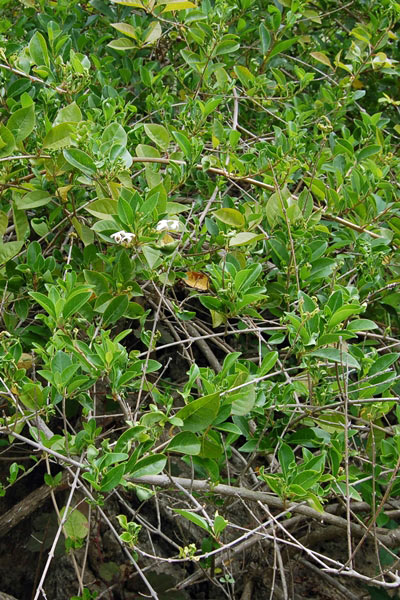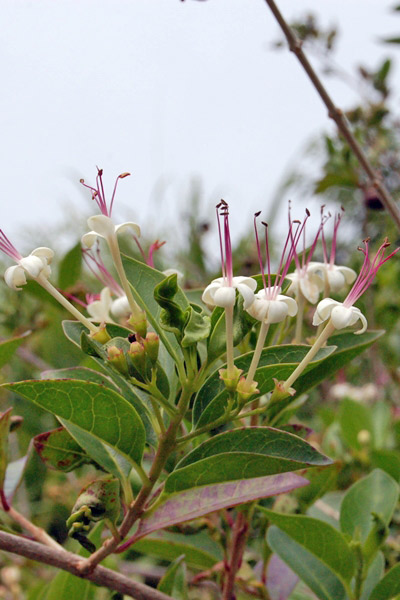Clerodendrum inerme
The seaside clerodendrum is a common plant found along Taiwan's coastline. It has adapted to the harsh coastal environment through its unique growth pattern. Its vine-like stems often lie low on the ground or rocks. This creeping growth pattern effectively reduces the direct impact of strong sea winds on the plant.
The seaside clerodendrum does not have high soil fertility requirements and can grow in poor coastal sandy soil or rocky crevices. It has high light requirements and will grow vigorously as long as it receives sufficient sunlight. This characteristic gives the seaside clerodendrum considerable potential for use in horticulture and landscaping.
In addition to its adaptability, the seaside clerodendrum also has a certain ornamental value. Its ovate-round leaves are thick and glossy, appearing a lustrous green in sunlight. The flowers of the seaside clerodendrum have a unique shape, with five pure white petals that sometimes have a faint reddish tint. At the base, the petals fuse to form a long cylinder, which then unfurls and curls outward at the tip. Five long stamens extend from the center of the flower. Although the flowers are not large, they are truly unforgettable. The spherical berries that form after flowering turn blackish-brown when ripe and also attract some birds to feed on them.
Due to its drought-tolerant, salt-tolerant, and wind-resistant characteristics, combined with its ease of care, the seaside clerodendrum has gained increasing attention in the horticultural community in recent years and is widely used in coastal landscape design, slope greening, and as a ground cover plant. Its creeping growth habit also effectively covers the ground, reduces dust, and achieves a greening effect.
The seaside clerodendrum is distributed across South Asia, Southeast Asia, Australia, China, and the Ryukyu Islands. In Taiwan, it is widely distributed along the entire coastline and on offshore islands such as Penghu and Ludao, often growing in dense clusters.

